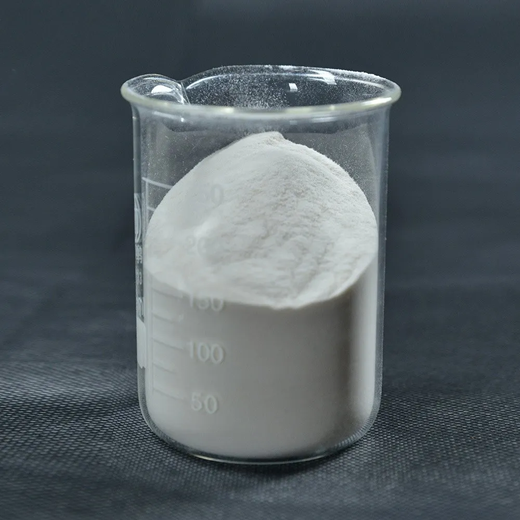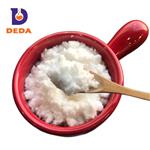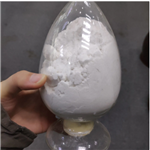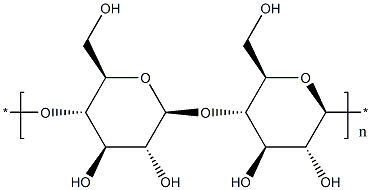What Can Modified Cellulose Be Used For?
Feb 29,2024
What is Modified Cellulose?
The term "modified cellulose" refers to chemical alterations primarily targeting the hydroxyl groups in the cellulose backbone. Within each cellulose unit lie both primary and secondary hydroxyl groups, with the primary C6-hydroxyl group demonstrating higher reactivity. Commercial foods such as shredded cheese (parmesan), ice cream, fast food (burgers), powdered drink mixes, among others, utilize chemically processed cellulose derived from wood pulp or cotton to thicken or cream their products. Modified cellulose exists in both soluble and insoluble forms, and various sources like corn cobs or stalks, soybean hulls, sugar cane stalks, oat hulls, rice hulls, wheat straws, sugar beet pulp, bamboo, jute, flax, and ramie can be utilized for its production.

In the food industry, the most commonly utilized modified cellulose ingredients include methylcellulose (MC), carboxymethyl cellulose (CMC), and microcrystalline cellulose (MCC). Methylcellulose comprises diverse cellulose ethers formed by the addition of methyl groups, either individually or in conjunction with other functional groups like methyl chloride and propylene oxide. Consequently, a broad range of cellulose ethers, including simple MC and hydroxypropyl MC, fall under the MC classification.
Simple MC, the predominant type of cellulose ether, involves replacing hydroxyl groups at the C-2, C-3, and/or C-6 positions of anhydro-d-glucose units with hydrophobic methyl (CH3) groups. Carboxymethyl cellulose, a long-chain ionic polysaccharide, is produced by treating cellulose with sodium hydroxide and subsequently reacting it with monochloroacetic acid or its sodium salt (Rahman et al., 2021). During this process, some naturally occurring hydroxyl groups in cellulose are replaced with carboxymethyl groups, yielding CMC (-CH2-COOH).
Applications
With considerable potential to supplant environmentally unfriendly fossil-based materials, cellulose emerges as a promising alternative with distinct advantages over synthetic fibers in today's global landscape. Its renewability and cost-effectiveness stand out as pivotal attributes for economic viability, thus driving focused research efforts in laboratories worldwide toward industrial applications. Cellulose's capacity to substitute fossil fuel-derived materials, notorious for their ecological harm, underscores its superiority, while its myriad benefits over synthetic fibers continue to be explored.
Cellulose finds diverse applications in packaging, medical supplies, electronics, and printing, owing to its equilibrium of hydrophilicity and notable mechanical and optical properties, which serve as focal points across various industries.
In the realm of processed food products, modified cellulose ingredients such as MC, CMC, and MCC function as low-calorie, functional additives. MC's ability to thicken, form films, and create thermal gels that solidify upon cooling are integral to its utility. Similarly, CMC is recognized for its capacity to thicken, stabilize, and modify the flow properties of hydrocolloidal suspensions and aqueous solutions, as described in its functional attributes.
- Related articles
- Related Qustion
- Discover Multifunctional Hydroxypropyl Methylcellulose (HPMC) Mar 7, 2024
Hydroxypropyl methylcellulose (HPMC) is a remarkable compound, manifesting in a white or off-white powder form.
- Application of Microcrystalline cellulose Mar 7, 2022
Microcrystalline cellulose (MCC) is mainly composed of β- 1,4-glucoside bonded linear polysaccharide [1] is a white, odorless and tasteless crystalline powder composed of free flowing short rod or pow
Microcrystalline cellulose
9004-34-6You may like
- The brief introduction of NADPH
Apr 29, 2024
- Nisin: Application, Mechanism of action and Side effects
Apr 28, 2024
- What is the primary function of NAD and FAD?
Apr 28, 2024
Microcrystalline cellulose manufacturers
- Microcrystalline cellulose
-

- $0.00 / 1kg
- 2024-04-29
- CAS:9004-34-6
- Min. Order: 1kg
- Purity: 99%
- Supply Ability: 500
- Microcrystalline cellulose
-

- $5.00 / 1kg
- 2024-04-29
- CAS:9004-34-6
- Min. Order: 1kg
- Purity: 99.5
- Supply Ability: 10 ton per month
- Microcrystalline cellulose
-

- $4.80 / 1kg
- 2024-04-29
- CAS:9004-34-6
- Min. Order: 1kg
- Purity: 99%
- Supply Ability: 300tons





